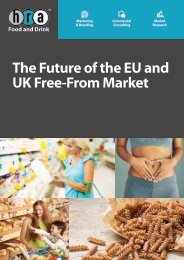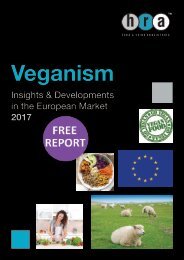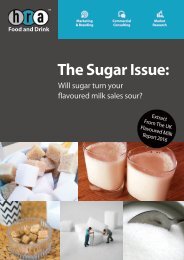Flavoured_Milk_Free
The backdrop to the UK flavoured milk market is one of relentless change. The removal of the EU milk quotas, the transition by emerging economies to a Western-style diet, the upcoming introduction of the ‘sugar tax’ and the booming sports nutrition industry are all aspects of change that create both challenges and opportunities for the UK flavoured milk market. HRA Food and Drink has developed this report as a map to guide industry stakeholders. Although volume growth in 2014 was slightly lower than in previous years, the flavoured milk market still has plenty of room for product innovation in the future.
The backdrop to the UK flavoured milk market is one of relentless change. The removal of the EU milk quotas, the transition by emerging economies to a Western-style diet, the upcoming introduction of the ‘sugar tax’ and the booming sports nutrition industry are all aspects of change that create both challenges and opportunities for the UK flavoured milk market.
HRA Food and Drink has developed this report as a map to guide industry stakeholders. Although volume growth in 2014 was slightly lower than in previous years, the flavoured milk market still has plenty of room for product innovation in the future.
You also want an ePaper? Increase the reach of your titles
YUMPU automatically turns print PDFs into web optimized ePapers that Google loves.
UK FLAVOURED MILK MARKET 2017 & BEYOND<br />
• Sterilisation causes the biggest nutrient loss, eliminating most vitamins, in<br />
particular vitamin B12.<br />
• UHT produces the biggest loss of vitamin C<br />
• Pasteurisation retains the most vitamins, losing only up to 20% of vitamins.<br />
There has been growing interest in intermediate temperature regimes which<br />
offer more shelf life than fresh milk, but less vitamin loss than heat treatments.<br />
This technology is called Extended Shelf Life (ESL) and can deliver shelf life<br />
of typically between 21 and 56 days from the date of production.<br />
2.3 Health benefits of dairy<br />
As a global average, milk contributed 35g of carbohydrates (14% RDA) 6g<br />
protein (10% RDA) and 7.3% fat (15% RDA) to a person’s daily diet (FAO<br />
2013)<br />
• <strong>Milk</strong> contributes 8-10% of protein in Europe, Oceania and the<br />
America’s<br />
• Dairy contributes 8-15% of fat in Europe, Oceania, the Americas and<br />
Africa (FAO 2013)<br />
2.3.1 Dairy and infant development<br />
• Nutrition in the first years of life is fundamental to later health, with<br />
malnutrition linked to impaired cognitive development.<br />
• Evidence suggests that a diet containing at least one glass of milk (250ml)<br />
can provide 25-33% of protein requirements in children from 1 to 5 years<br />
of age and have a positive impact on weight gain and growth.<br />
• In developed countries, milk is used in programs intended to address<br />
malnutrition.<br />
All rights reserved, ©Teepee Ltd, t/a HRA Food & Drink: 2016<br />
to 2017<br />
18







